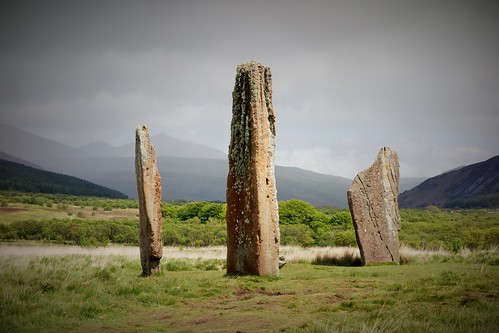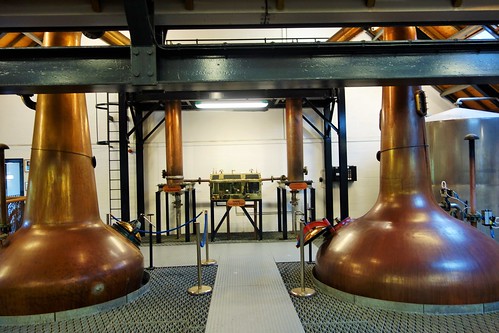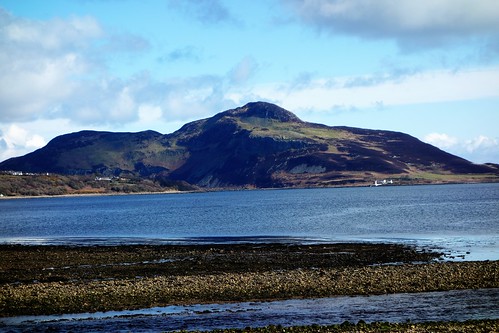Isle of Arran, Scotland
(Above image captures Isle of Arran and Firth of Clyde taken from the Scottish mainland)
© Nigel P Cole/Catswhiskerstours Limited
On Arran visitors can connect with history stretching back 5000 years, visit castles, participate in a wide range of activities, explore the unique geology, climb mountains, hike and visit nearby Holy Island.
The island is accessed via ferry from the port of Ardrossan, S.W of Glasgow.
For the benefit of visitors a summary of the island’s key features is provided below.
Arran covers some 432 sq.km (163 sq.m) has a permanent population of some 5000 persons and is split into two parishes, Kilmory which covers the west and Kilbride which covers the east. The principal town (and ferry port) is Brodick. Other main towns and villages include: Lamlash, Whiting Bay, Kildonan, Blackwaterfoot, Machrie, Lochranza, Sannox and Corrie.
Arran should not be confused with the Irish island of Aran after which the famous knitwear is named.
Whiting Bay
Origin of the name Arran is not certain but may derive from the island's kidney shape. The Gaelic term for kidney is airne.
→Castles
- Brodick Castle is a major visitor attraction. There is a record of stone castle in 1240 subsequent to which the fortification featured in many conflicts and changes of control. The current building, home to the Hamilton family, dates from 1844 and is designed in Scots Baronial style .
Lochranza Castle is a ruin located close to the northern tip of Arran. The first castle, a Hall House, on the site was probably constructed in the 13th century, possibly by the MacSweens. Over the succeeding centuries many changes of ownership- and structural changes- occurred culminating in control passing to the Hamiltons of Brodick Castle.
Lochranza Castle
→Prehistory
- At Machrie Moor, near Blackwaterfoot, can be found one of the top-ranking prehistoric sites in Western Europe. This extensive site comprises ruins of chambered tombs, hut circles and six megalithic rings.
- A few miles north on Brodick, accessed via a forest trail, can be found an exposed rock surface with numerous carvings classified by some as ‘rock art’.
→Brewing and Distilling
- At Lochranza is the Isle of Arran Whisky Distillery, founded in 1995. There is a visitor centre and tours of the distillery are available.
- Isle of Arran Brewery is a micro brewery established in 2000. Located near Brodick. There is a visitor centre and tours are available.
→Crafts
- At Kilmory, about 45 mins south of Brodick, can be found the Kilmory Workshop which produces handmade woodwork and stoneware pottery.
- At Whiting Bay is the Arran Art Gallery which houses an ever changing display of local art work.
- Arran offers a wide range of options including walking, cycling, fishing, golf and mountain hiking. The Arran outdoors includes peaks and glens such as Goatfell (2866 ft.), Cir Mhor, Beinn Tarsuinn, Bein Nuis, Glen Rosa and Glen Lorsa. The latter being the wildest glen (valley) on Arran. Not to be missed are the Glenashdale Falls near Whiting Bay.
Glenashdale Falls (Again 'dale' is of Old Norse origin meaning hill)
→Island Museum
- Close to Brodick is the Isle of Arran Heritage Museum where can be viewed a wide range of exhibits covering the social and family history, archaeology and geology of Arran.
→Family History Research
- The Arran Heritage Museum houses a genealogy section which provides information on Arran families.
→Arran Geology
Arran’s variety of rocks and structures ranks the island as a world-class geological location. Dr. James Hutton, the ‘Father of Geology’ undertook fieldwork here in 1787 to support his Theory of the Earth which holds good today. On Arran, near Lochrenza, can be found Hutton’s Unconformity
(rocks of different periods meeting at a discordant angle). There are discrete geological walks focused on the following areas:
- Lochranza (includes Hutton’s Unconformity).
- Imachar: Outcrops of Cambrian rocks on the beach.
- Blackwaterfoot: Rocks from the Triassic period.
- Kildonan: Rocks from Tertiary and Triassic periods.
- Sannox: Ordovican and Devonian periods.
- Corrie: Granite and Carboniferous Sandstone.
- Brodick: Sandstones and Granite.
- Whiting Bay: Tertiary and Permian periods.
→Holy Isle
Opposite Lamlash off the east of Arran is the tiny, Holy Island. This island has a long history of spiritual occupation, from AD 700 when it was the home of St. Molias to the current period where it is owned and occupied by a community of Tibetan Buddhists. Visitors are allowed.

















Comments
Post a Comment